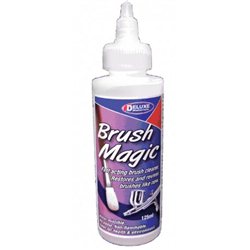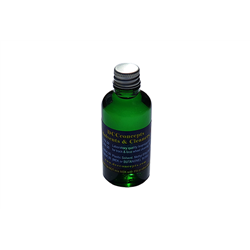Static grass puffer bottles work by manually charging model grass fibres with static electricity. When the charged...
No products
Product successfully added to your shopping cart
There are 0 items in your cart. There is 1 item in your cart.
Search Tips
What are the best options for cleaning acrylic paint from brushes ?
It is important to have a good cleaning regime for brushes when using acrylic paints as unwanted deposits can severely affect the lifespan of any brush.
Whilst painting it is a good idea to periodically remove excess paint using a cloth or tissue and then give the brush a swirl in clean water to keep the filaments damp. When a painting session is finished, it is a good idea to wipe away any excess acrylic paint from the brush using a cloth and then clean it in tepid water with a mild detergent such as soap or even washing up liquid.
Tepid water is ideal as hot water can actually harden stubborn deposits, especially near the ferrule of the brush. Once any excess paint has been cleaned away then again give the brush a final swirl in clean water and remove any excess water droplets with a cloth or tissue. Leave the brush to dry horizontally as this will ensure that the filaments will better hold their shape and any residual water is not stuck in the ferrule which could cause rust to develop.
Extremely stubborn stains can also be removed by solvents such as 'Brush Magic' or Isopropyl Alcohol.
Click here to receive the tips weekly in your mailbox. You can unsubscribe at any time.










